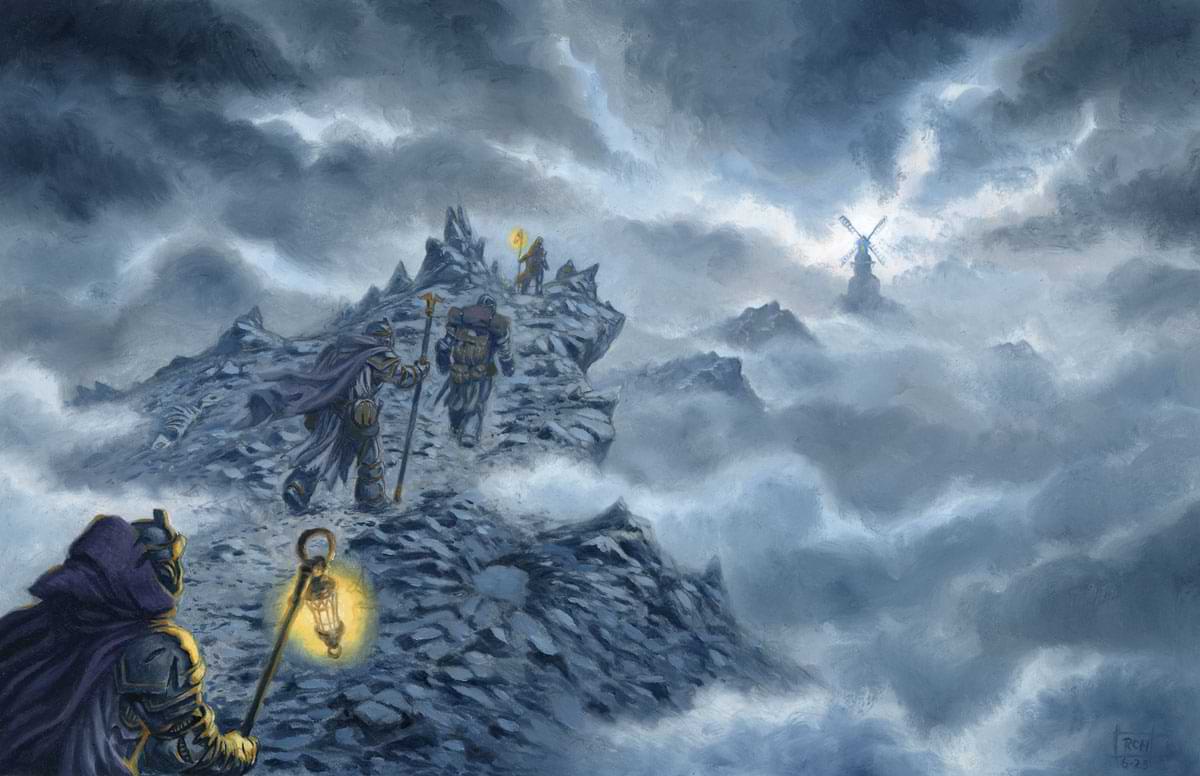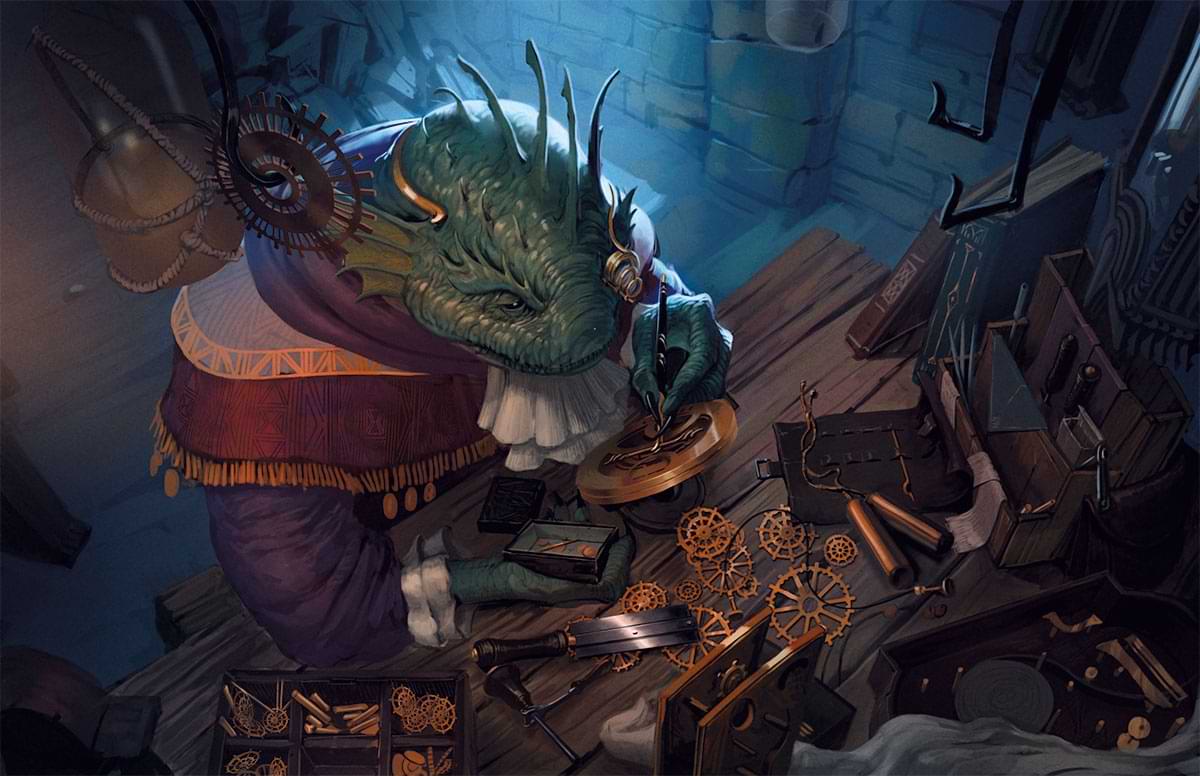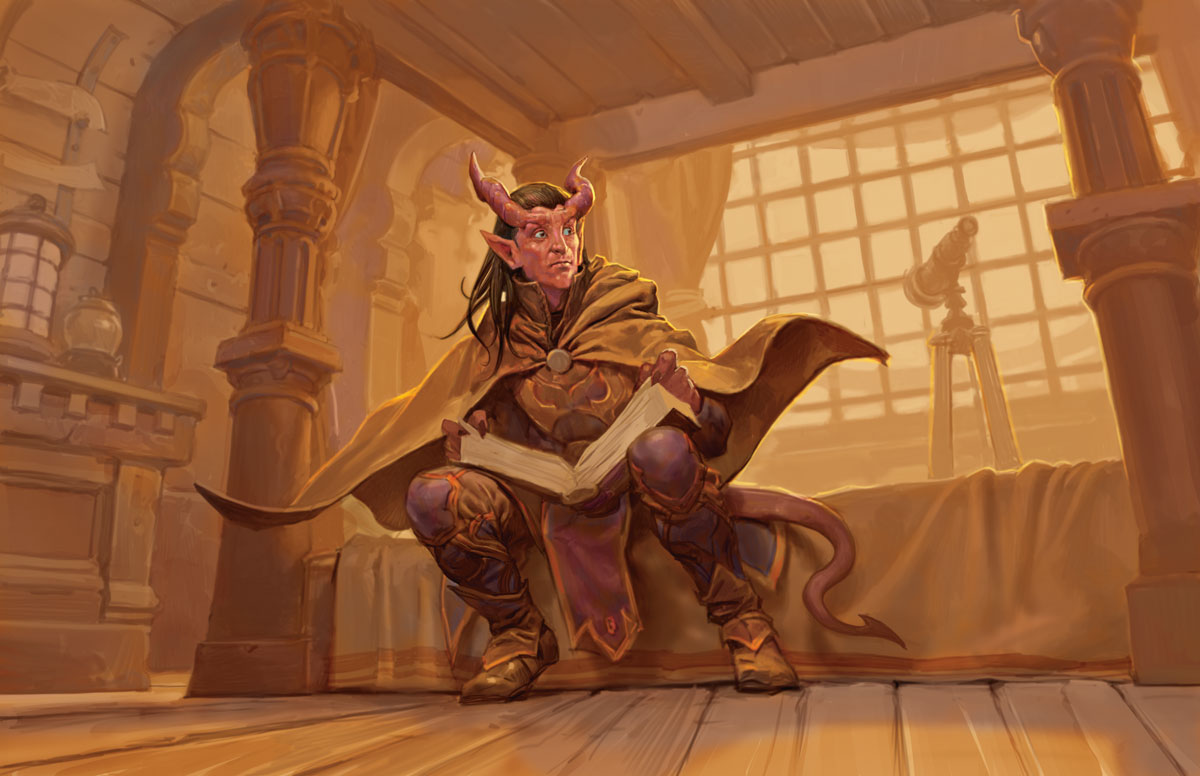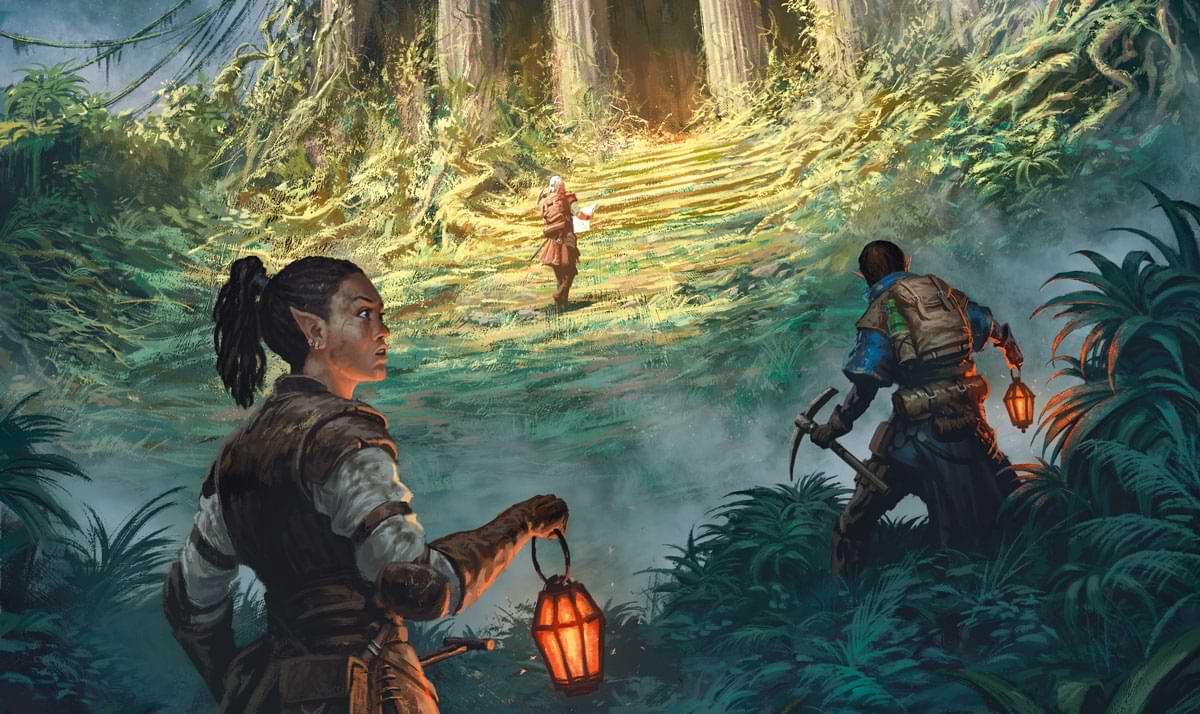I’ve been playing Dungeons & Dragons for two decades, and I can count the high-level adventures I’ve played on one hand. Adventurers who are level 10 and above are a surprisingly rare and special experience that I can’t recommend enough, and Vecna: Eve of Ruin serves up that power fantasy on an adamantine platter. But creating and playing a high-level character can be a daunting experience, even for veteran D&D players.
Here are some helpful ponderings for creating your level 10 character for Vecna: Eve of Ruin.
- Who Is Your Character, and How Did They Become So Powerful?
- The Power of Themes
- To Multiclass or Not to Multiclass?
- Feats or Ability Scores?
- Learn Your Kit
Who Is Your Character, and How Did They Become So Powerful?

Vecna: Eve of Ruin begins with the player characters at level 10, and I can’t emphasize this enough: That’s a huge deal. These are not plucky level 1 adventurers tasked with ferrying a crate of weasels to grandma’s house. These are battle-hardened heroes (or baddies) with a veritable lifetime of experience, knowledge, and skill at their disposal.
I personally see a character at level 10 as being at a narrative midpoint in their overall story. They are Luke Skywalker after his vision on Dagobah or Michael Corleone after he whacks Sollozzo and McCluskey. They’ve been on a specific journey for a long time, but recently, something happened that significantly shifted their situation and propelled them forward.
Get Backstory Help from Handy Tables
Vecna: Eve of Ruin spans the multiverse of D&D, and it begins in Neverwinter. The adventure contains a table with six backstories fit for level 10 heroes that you can draw upon, as well as six different possible purposes for your character to be in Neverwinter. What I enjoy about this "Purpose In Neverwinter" table is that it welcomes players to get weird with it. The purposes range from being a local fixer for Lord Neverember to being a multiverse traveling do-gooder, drawn to a sense of dread surrounding Neverwinter.
Laying this basic foundation can serve as a compass when you’re wading through the dozens of choices you need to make when creating a high-level character.
Level Up Your Character with Vecna: Nest of the Eldritch Eye
While starting a campaign at level 3 or 5 is relatively common for D&D adventures, starting at level 10 can be a new experience that requires players to have a backstory to support their character's adventuring prowess.
Vecna: Nest of the Eldritch Eye is a prequel to Eve of Ruin and starts at level 3, enabling players to establish their character's background as adventurers and connection to Neverwinter, so they have a strong hook to adventure at the beginning of Eve of Ruin.
When you preorder your digital copy of Vecna: Eve of Ruin before May 21, you'll immediately receive Nest of the Eldritch Eye as a preorder perk. You can otherwise purchase Nest of the Eldritch Eye for $4.99 after Eve of Ruin drops on May 21!
The Power of Themes

It can be so easy to become paralyzed by choice when rolling even a level 1 character in D&D. Doing it for a level 10 character can be ten times more intense. That’s why I think themes can be an extremely helpful tool when creating a character, especially a high-level one.
Start with an Idea
A theme can be anything that grounds your character to a specific idea. They can be broad, like maybe your Sorcerer has a frosty disposition, so you prioritize picking spells that deal Cold damage. Themes can also be hyper-specific, like maybe your Hexblade’s backstory delves into how their patron promised to help hide them from their pursuers, so their spells are catered toward illusions and enchantments. Or maybe your Rapier-wielding Battle Master Fighter was trained by a former pirate, a theme that points toward maneuver choices like Evasive Footwork, Parry, Riposte, and Lunging Attack.
Prioritize Thematic Character Options
When faced with that ever-expanding list of spells and abilities, I recommend you pick the ones that fit with one of your character’s themes, even if there’s a more "mechanically optimal" choice. If it's not your character’s vibe, you don’t need to take it. Just because casting Fireball can and will make your heart flutter with joy doesn’t mean your soft-spoken Divination Wizard needs to take it.
Consider the Adventure's Themes
Secrets are a recurring theme in Vecna: Eve of Ruin. Vecna gobbles those things up like me in front of a charcuterie board. It could be fun to play into that by taking classes and/or abilities that can help uncover or discover unexpected secrets. Clerics of the Knowledge or Arcana Domain could be just as hungry for the multiverse’s secrets as Vecna. The Sage background is perfect for a character that’s always traipsing through libraries, looking for hidden nuggets of lore. Spells like Commune, Divination, and Legend Lore also play upon the theme of secrets in fun ways.
To Multiclass or Not to Multiclass?

When creating a level 10 character, you can dial in some flavorful class combinations right from the get-go. You have ten levels to play with; you can get real weird with it if you want. Roll that Fairy Barbarian/Paladin/Hexblade with the Lucky feat, dual-wielding two Battleaxes like a tiny pinwheel of death. Go nuts!
But if you’re interested in rolling a multiclassed character that isn’t a strange ranking of different class mechanics, I recommend only dipping one or two levels into one other class. You may be thinking that one or two levels won’t really be worth it, but I assure you, there are several classes that can add a boatload of satisfying perks and flavors to your character with just one or two levels.
Barbarian: Soak Damage Like a Sponge!
For instance, just two levels in Barbarian gets you Rage, Unarmored Defense, and Reckless Attack. For the low low price of two levels, you get incredible damage mitigation and have no need for armor and you can attack with Advantage whenever you want.
Rogue: Gain a Very Particular Set of Skills…
Another noteworthy quick dip: With just two levels in Rogue, you get Expertise in two skills, bonus Sneak Attack damage, and your action economy multiplies with Cunning Action.
Wizard: Supercharge Your Spellcasting
And for the casters, never underestimate two levels in Wizard. You get three cantrips, eight level 1 spells, Arcane Recovery, and an Arcane Tradition. If you really want to get the simplest mechanical bang for your buck out of two Wizard levels, I recommend the War Magic tradition. Arcane Deflection will help keep your squishy caster body from getting all full of holes, and Tactical Wit can help you go sooner in Initiative order, ensuring you can Haste the Barbarian, Bless your allies, or just toss an old-fashioned Fireball into a mob of mooks.
Choose Your Multiclass Wisely
Remember that every multiclassed level you take diverts you away from the natural power progression of your base class and could end up hamstringing you in some unexpected ways. For instance, if you start as a Paladin and multiclass five levels into Fighter, yes, you get a second Fighting Style, Action Surge, and a Martial Archetype, but the second attack you get at 5th level doesn’t stack with the second attack Paladins get at level 5. That fifth level of Fighter kinda becomes a big mechanical and narrative waste for your character’s development. Additionally, the more multiclasses you take, the more high-level features you’ll miss out on. All it takes is four multiclass levels to forever lock your caster out of level 9 spells, for example.
If you want to keep your level 10 character’s mechanics dynamic but easy to manage, either stay the course with your base class to reap the benefits of those high-level abilities or just dip into one or two levels of another class.
Make Your Multiclass Work for Your Backstory
Narratively, when multiclassing, I really vibe with the idea of starting with two levels of a class and then diverting entirely to a different one because it represents a pivot in your character’s backstory. A character that has two levels in Wizard and eight levels in Cleric could’ve had a religious awakening while in school, turning them toward the Arcana or Knowledge Domain. A character with two levels in Rogue and eight levels in Fighter could’ve been a street urchin who was taken in by a generous knight who taught them how to fight properly. A character with two levels of Sorcerer and eight levels of Warlock could’ve been cast out of their home for their strange powers and taken in by a patron who seeks to take advantage of their wild magic.
If you want to get the flavor of a different class without entirely committing to taking a level in it, there are some cheaper options that could satisfy that urge, like feats.
Feats or Ability Scores?

If you aren’t multiclassing, you will have at least two opportunities to choose between a feat or improving ability scores when creating a level 10 character. There are a ton of schools of thought when it comes to which is better, but it all depends on what you want out of this experience. If you are conflicted over whether or not to multiclass, I strongly recommend you consider any of the "initiate" or "adept" feats.
Magic Initiate, for example, lets you choose between any of the spellcasting classes (Bard, Cleric, Druid, Sorcerer, Warlock, or Wizard) and take spells from that class’s spell list. Artificer Initiate grants you a few cute Artificer abilities, and Fighting Initiate gives you a fighting style, such as Archery or Dueling.
Martial Adept grants maneuvers from the Battle Master Fighter subclass, which pairs particularly well with Monks, Hexblade Warlocks, and Bladesinger Wizards. Eldritch Adept adds one Eldritch Invocation from the Warlock class to your kit. An Abjuration Wizard that takes Armor of Shadows with this feat could technically charge up her Arcane Ward whenever she wants by casting Mage Armor at will (I may have seen a Wizard do that in a game once upon a time…).
But if multiclassing isn’t on your mind, and you know you want a feat but can’t decide on one, you could prioritize those that also increase ability scores, such as Actor, Athlete, Chef, Durable, or even the bane of every DM, Keen Mind. Skill Expert, from an economics standpoint, is one of the highest-value feats in the game because it gives out flat bonuses like Oprah giving out cars to her audience.
Simply put, flat bonuses are next to godliness in D&D. It’s why the Rogue’s Expertise is so valuable. Whether it’s an ability modifier, a skill, or a saving throw, a flat bonus is your best friend in D&D. Your dice may betray you, but that flat bonus will always be there to back you up. So if you want to keep your level 10 character mechanically lean and extra effective, ignore feats, ignore multiclassing, and just take Ability Score Improvements. Bogging down your character’s kit with extra spells or abilities may seem like a good idea during character creation, but it can quickly spiral into long, confusing turns in combat, which can be stressful for you, your DM, and your table.
Learn Your Kit
Building a kit for your character that you, as a player, can learn and master is essential. You don’t need to know the exact ins and outs of your character's suite of spells and abilities right away, but you should feel confident that you’ll master it eventually.
If you’re still unsure of how to use your character’s kit after two or three sessions, consider asking your DM to help you practice. Run a few turns of fake combat before a session just to get the rhythms down. If you’re a Ranger, get into the habit of casting Hunter's Mark first. If you’re a Rogue, practice using your Cunning Action to Hide as a Bonus Action before you attack so you can get Advantage and, therefore, Sneak Attack damage. And please, for the love of Bahamut and all of Mt. Celestia, if you have a spell that allows you to summon an ally, like Conjure Animals, Summon Greater Demon, or Create Undead, learn exactly what your allies do (and maybe roll their attacks and damage before your turn). Nothing slows down combat quite like someone who needs to look up how much damage their jackal does.
Set Forth on High-Level Adventure
If Vecna: Eve of Ruin is your first foray into high-level D&D adventures, you are in for a treat. And if you keep your level 10 character’s build lean but effective, you will have an amazing time moving through the multiverse to track down Vecna’s Burn Book and ruin his senior prom once and for all.
Oh, crud, did I spoil the Chapter 9 reveal?

Kyle Shire (@kyleshire) is a contributing writer to D&D Beyond and a producer for Critical Role. In the past, he worked as a producer, writer, and host for Machinima Studios and Warner Brothers Interactive Entertainment. He's appeared on HyperRPG as the Mayor of Kollok and the Saving Throw Show. He currently lives in Los Angeles.








-
View User Profile
-
Send Message
Posted May 17, 2024Yeah, there are a few things not right with this article.
For example, like you said, you would get 8 spells with 2 levels of wizard to choose from. But I think what they meant was you only have three spell slots.
However, they claim you can cast Fireball with two levels of spellcasting which isn't true.
Also, three levels of another class DOESN'T lock you out of 9th level spells. You still get one as long as you have 17 levels of wizard.
The article isn't bad, but I do think the author might want to brush up on their rules.
-
View User Profile
-
Send Message
Posted May 17, 2024一个十级对巫妖复仇的复仇圣骑士会有怎么样的游玩体验呢?
-
View User Profile
-
Send Message
Posted May 17, 2024You're correct, they were likely thinking of (most) sorcerers at second level. The part that stuck out to me more was "All it takes is three multiclass levels to forever lock your caster out of level 9 spells, for example." Which only hold true if your group stops playing as soon as they reach 20th level.
For the most part though I think the writer did a good job on the 1st, 2nd and 5th sections of the article!
-
View User Profile
-
Send Message
Posted May 17, 2024I don't understand what the issue with the keen mind feat is. If it's the player is using the DM as note taker then simply let them describe how their character's mind palace works and what it looks like and where they store each bit of knowledge. That way they still have to make global notes and the DM can correct them on the details regarding the subject.
-
View User Profile
-
Send Message
Posted May 17, 2024I am pretty sure you get all of your spell slots if you multi-class into certain spell using classes. For two or more straight spell casters like Clerics, Druids, Bards, Wizards, and Sorcerers, you add up you levels then consult a table. For example if you have 10 Cleric levels and 10 Wizard levels you spell slots would be for a 20th level caster with some caveats. You would have a 9th level spell slot but neither of your classes is high enough to cast a level 9th spell. You can upcast a spell you do know with a level 9th slot.
this is not true for hybrid spell casters like Warlocks and Eldritch Knights or Arcane Tricksters. I think but could be wrong but you add them together and divide by 3 or something like that.
Also if you multi-class Fighter/Wizard for example, only the wizard levels count. So a 10th level Fighter and a 10 Level Wizard would only have spell slots for 10th level. Unless your fighter was an Eldritch Knight. I am not sure if that would be 13th level or 14th level in that case. The rounding escapes me but usually DnD simply chops off the decimals.
-
View User Profile
-
Send Message
Posted May 17, 2024The issue is player generally wants to be lazy and not take notes and puts more work on the DM so they take keen mind feat.
-
View User Profile
-
Send Message
Posted May 19, 2024I didn't see it mentioned in the article but, remember that multiclassing and feats are optional rules and up to the DM to allow.
-
View User Profile
-
Send Message
Posted May 20, 2024tip: just take an old character that you have used in a campaign before add the campaign into their backstory and done, or take a character from your library and flesh out an adventurer that they would be on. or a funny little guy
-
View User Profile
-
Send Message
Posted May 20, 2024說實話我不知道-
View User Profile
-
Send Message
Posted May 20, 2024DMG Starting at Higher Level
Creating a Campaign - Dungeon Master’s Guide - Sources - D&D Beyond (dndbeyond.com)
-
View User Profile
-
Send Message
Posted May 20, 2024These issues have been fixed!
Re: Casting fireball with 2 levels of spellcasting. This section implies that Tactical Wit can allow you to go higher in the initiative and allows you to drop a fireball if you already know the spell outside of the 2-level dip into Wizard. Which is applicable for level 10 characters.
-
View User Profile
-
Send Message
Posted May 21, 2024I just want a straight anwser from the book, how much gold/magic itens the level 10 adventures start with? You cant exepect they will apper without anything and only the starting gear.
-
View User Profile
-
Send Message
Posted Feb 21, 2025I liked this a lot. Can you explain what are Green, Blue and Purple Items? I guess Green = Common, Blue = Uncommon and Purple = Rare.
-
View User Profile
-
Send Message
Posted Feb 21, 2025Dude... it's literally the color of the items on DnD Beyond. Green = Uncommon, Blue = Rare, Purple = Very Rare, Orange = Legendary
-
View User Profile
-
Send Message
Posted Feb 21, 2025Thanks. I dont use Beyond, so I was rummaging throught the DMG.